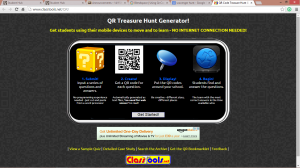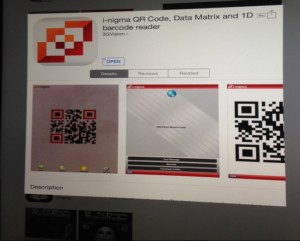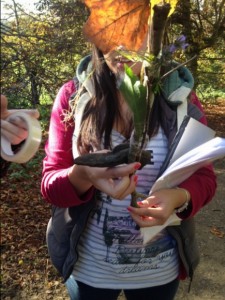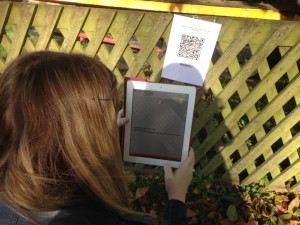E-tivity QR Codes Task
We decided to design a creative outdoor activity using QR bar codes. We used the QR codes to create an Adventure Trail around a country park, named East Carlton Park.
Primarily, the adventure trail task focuses around ICT skills for the children, and learning through the use of technology such as iPads whilst in the outdoor environment. iPads and tablets are beneficial in many ways to aid learning as it encourages children to have ownership of their learning and be able to explore and reflect on what they have learnt.
We started by designing a QR code trail on www.classtools.net/QR. We knew before we began we wanted our trail to focus around East Carlton Park, so focused our questions and answers for the trail around the landmarks of the park. The website we were using put our questions we created into QR codes for us to print.
After printing these QR codes, we then laminated each of them to ensure the task would be suitable for different weather conditions. We tested each QR code to ensure they all worked with the iPad we were using and the app, named ‘i-nigma’.
We then travelled to the park to set up the adventure trail. We began by going around to the various locations and sticking the QR codes in appropriate areas. After this was complete, we then set about completing the adventure trail as if we were the children on the task. Whilst doing this, we also gathered a variety of materials for our Journey Stick.
We used an iPad once we had arrived at each location. The iPad and the ‘i-nigma’ app read the QR code to give the next instruction for our trail. We followed each instruction given until reaching the final location (the park), where the children could have their final “adventure”.
We also considered ways in which this task can be expanded to link with other subjects, such as Art and Music. For music the teacher would prompt children to be aware of their surroundings and the noises that they can hear e.g. leaves rustling, water flowing, wind, background noise etc. These sounds can be recorded to be listened back to when in the classroom, possible encouraging children to make their own music which can mimic these sounds. Children will also be encouraged to use their voice as an instrument to represent the sounds of some of the areas they are visiting e.g. train.
For art, children would all be provided with a stick to take on their adventure. They would be instructed to add to this stick something from each location to create a ‘Journey Stick’, which could be associated with different areas of the trail. Art could also be extended once returning back to the classroom to do leaf and twig printing with the different resources that the children would collect during the trail.
By Christiana Hankins, Jennifer McAuley and Helen Draycott.




